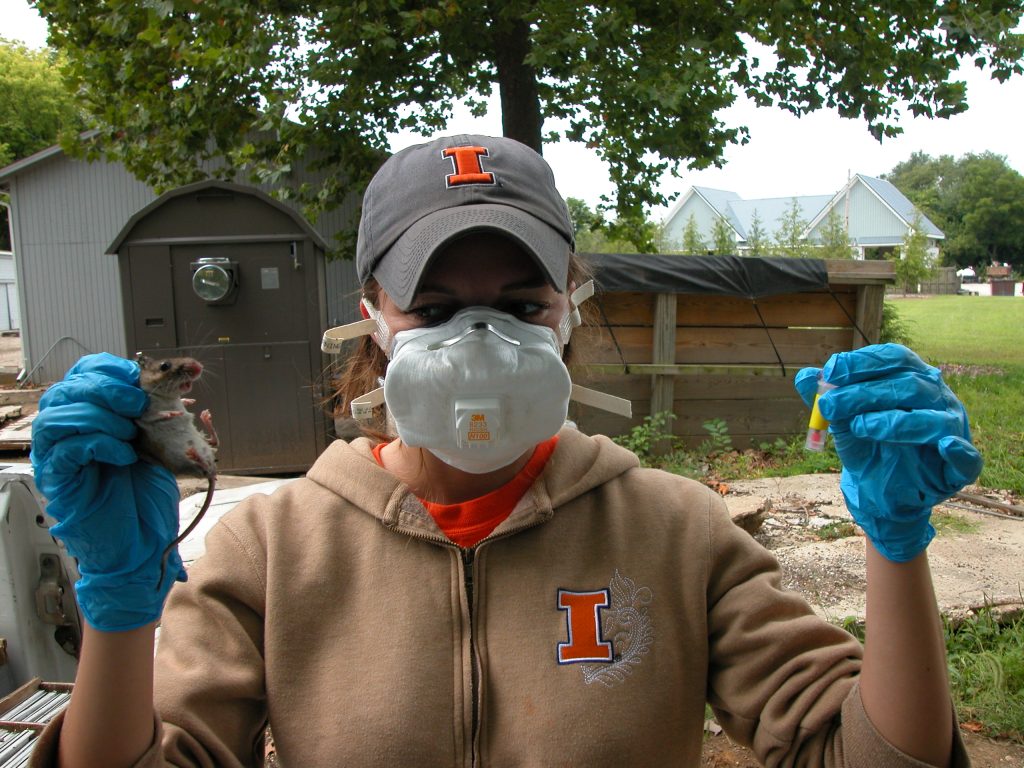Toxoplasma gondii is a protozoan parasite for which cats (wild and domestic) are the definitive host. Humans and wildlife can acquire T. gondii by accidental consumption of cat feces infected with T. gondii, or by consumption of undercooked meat infected with the cyst form of the parasite.

Our research looked to determine the association between free-ranging cats and Toxoplasma gondii infection in small and medium size mammals in a natural area. Live trapping, scent stations, and motion camera data were used to determine the distribution of feral, free-roaming, and domestic cats around 55 rural natural areas close to urban developments or buildings. Also, a survey was conducted to assess the occurrence of small and medium-sized mammals in this natural area. All this information helps us better understand how toxoplasmosis affects wildlife and the correlation between an increase in the occurrence of cats and an increase in the risk factor for T. gondii infection in wildlife in the area.

Publications:
Fredebaugh SL, Mateus-Pinilla NE, McAllister M, Warner RE, Weng H. 2011. Prevalence of antibody toToxoplasma gondii in terrestrial wildlife in a natural area. Journal of Wildlife Diseases. 47(2):381-92 [PDF]
Lehrer EW, Fredebaugh SL, Schooley RL, Mateus-Pinilla NE. 2010. Prevalence of antibodies to Toxoplasma gondii in woodchucks across an urban-rural gradient. Journal of Wildlife Disease. 46(3): 977-980 [PDF]
Awobode HO, Paul AJ, Sengoku-Graham H, Clem RW, Mateus-Pinilla NE, McAllister MM. 2013. Serial Monoxenous Transmission of Toxoplasma gondii in cats. Journal of Parasitology 99(6): 1122-1124
Mateus-Pinilla NE , Hannon B, Weigel RM. 2002. A computer simulation of the prevention of the transmission of Toxoplasma gondii on swine farms using a feline T. gondii vaccine. Preventive Veterinary Medicine 55(1):17-36
Mateus-Pinilla NE, Dubey JP, Choromanski L, and Weigel RM. 1999. A Field Trial on the Effectiveness of a Feline Toxoplasma Gondii Vaccine in Reducing T. Gondii Exposure for Swine. Journal of Parasitology 85(5):855-860
Mateus-Pinilla NE, Weigel RM, Dubey JP. 1997. A Field Trial on the Effectiveness of a Feline Toxoplasma Vaccine in Reducing Toxoplasma Exposure for Swine. VIII International Symposium on Veterinary Epidemiology and Economics (ISVEE), Epidemiologie-et-Sante-Animale, Vol. 1: 04.14.1-04.14.3 [pdf]
Dubey JP, Weigel RM, Siegel AM, Thulliez P, Kitron UD, Mitchell MA, Mannelli AM, Mateus-Pinilla NE, Shen SK, Kwok O, Todd KS. 1995. Sources and Reservoirs of Toxoplasma gondii Infection on 47 Swine Farms in Illinois. J. Parasitol. 81(5):723-729
Weigel RM, Dubey JP, Siegel AM, Kitron UD, Mannelli AM, Mitchell MA, Mateus-Pinilla NE,Thulliez P, Shen K, Kwok O, Todd, KS. 1995. Risk Factors for Transmission of Toxoplasma gondii on Swine Farms in Illinois. J. Parasitol. 81(5):736-741
